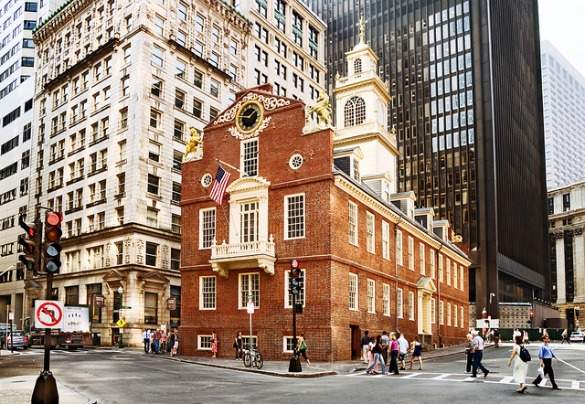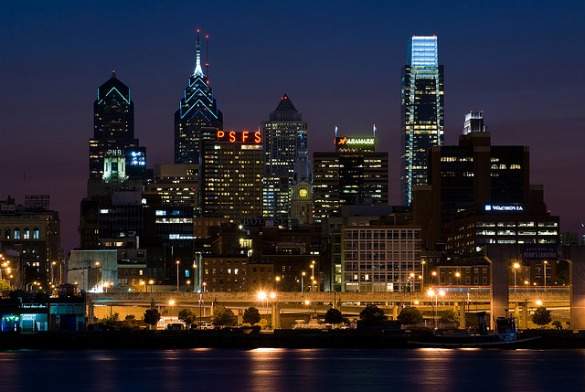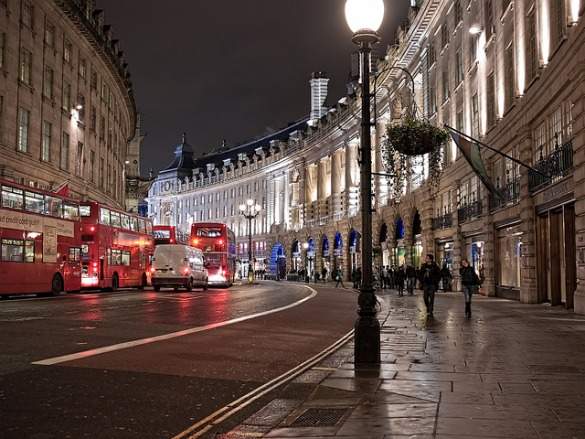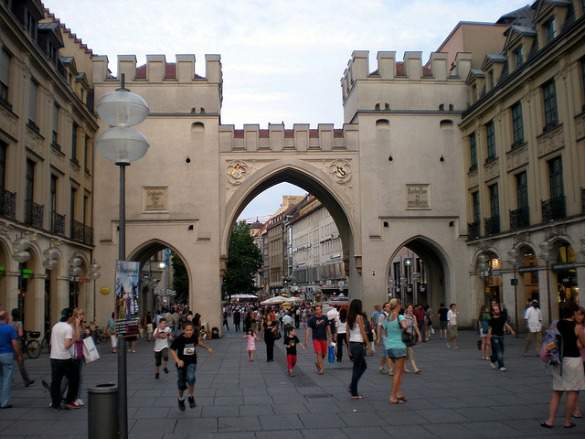Most travelers only worry about getting a decent hotel, finding a place to eat, and maybe getting a deal on a rental car at their destination. Wheelchair users must also worry about encountering stairways, narrow doors, accessible bathrooms, and transportation. In some places it can be near impossible for a wheelchair user to find an affordable accessible hotel, let alone navigate the city streets and public transport. In others, it’s a lot easier.
Knowledge is power, so with that in mind, here are some of the most wheelchair-friendly cities for travelers.
San Francisco, California

This Northern California city presents a challenge with its compact size and hilly nature, yet it can be very accommodating for wheelchairs. Getting around is very easy as the three major transit providers are almost completely barrier free.
MUNI covers the city like a blanket with its mix of accessible streetcars, trolleys, and buses, BART offers completely accessible subway service from across the bay and the airport to the Market Street corridor, and CalTrain offers commuter service from the south bay via accessible stations and railroad coaches. Unfortunately, the city’s famous cable cars are not wheelchair accessible.
Hotels in San Francisco run the gamut of budget brands to the luxury suites. Several TraveLodges in the city feature small barrier-free rooms for under $100, some with roll-in showers. On the other end of the price scale, Hyatt, Marriott, Hilton, and Sheraton all offer hotels in the Fisherman’s Wharf area featuring accessible rooms with roll-in showers in the $200-300 range. Check their sites for a list of accessible rooms in the city.
Our step-free itinerary would be to sample sourdough and chowder along Fisherman’s Wharf, head over to Ghirardelli Square for chocolate and shopping, and have Irish Coffee at the Buena Vista Café while watching the cable cars turnaround on the turntable. After a tour of Alcatraz, take in a game at AT&T Park, one of the country’s best baseball stadiums for wheelchair users. For dinner, head down Columbus Avenue to North Beach for some great Italian food and then a nightcap at Larocca’s Corner bar.
>> Look for cheap flights to San Francisco
Boston, Massachusetts
This old, Colonial era city is a great place to visit and soak up some American history. With a little advance knowledge, you can find you way, step-free!
Boston’s most popular attraction, the Freedom Trail, is accessible to wheelchairs for its entire length. Starting in Boston Common in the center of town, the trail (a red line painted on the sidewalk) goes by such sights as the Granary Burying Ground, Paul Revere’s house, the Old North Church, and Faneuil Hall before ending up at the battlefield of Bunker Hill. Note that the upper floor of the Revere house and the monument tower at Bunker Hill are not accessible.
For sports fans, the oldest stadium in baseball, Fenway Park, is now served by an accessible subway station. Basketball and hockey fans can catch the action at the TD Garden, above the accessible North Station. Other accessible places to visit are Quincy Market, the Italian restaurants and bakeries of the North End, and the New England Aquarium on the waterfront.
Getting around is easy via the accessible portions of the T subway system. This is the oldest system in America; so many parts of it are not accessible, especially on the Green Line. More accessible are the Orange, Red, and Silver lines in the heart of the city. MBTA runs the system and you can download a map of barrier-free stations at their website, mbta.com. All MBTA buses are accessible to wheelchairs.
We like to stay at the Embassy Suites by the airport, which can have lower rates than the city center, and includes a hot breakfast. Other choices include the Holiday Inn Boston Garden, Westin Waterfront, and the Fairmont Battery. All of these choices are accessible and feature roll-in showers.
>> Discover more things to do in Boston
>> Look for cheap hotels in Boston
>> Search for airfare to Boston
Chicago, Illinois

Brash and in-your-face, Chicago is no wimpy city. Its compact, walkable downtown, large selection of hotels, and transit options are all pluses for wheelchairs.
Instead of a subway, Chicago elevates most of their trains and calls the system the El. Nine of the thirteen Loop (downtown) stations are equipped with elevators as are both airport stations. To see Frank Lloyd Wright’s houses, take the Green Line to the accessible Harlem/Lake station. All buses are equipped for wheelchair riders.
Most of Chicago’s main attractions, like the Willis Tower, Navy Pier, museums and Grant Park are all wheelchair accessible. And both baseball stadiums, Soldier Field, and the United Center have barrier-free stations nearby making Chicago very friendly to the mobility challenged sports fan.
Some restaurants in the city are upstairs or downstairs but most are accessible to wheelchairs. Try Gino’s East for deep dish pizza, Ronny’s Steakhouse on Randolph Street, and Fast Track Hot Dogs next to the step-free Clinton Green Line Station for great Chicago-style Vienna Beef hot dogs. Chicago is also one of the best shopping destinations anywhere.
Hotels are surprisingly affordable for such a big city. For chair users, Embassy Suites is a good choice, with breakfast included, on State Street near the Navy Pier. Other good choices include the Best Western Grant Park, Westin Michigan Avenue, and The Palmer House Hilton.
>> Plan your trip with our Chicago travel guide
>> Look for airfare to Chicago
>> Book your hotel in Chicago
New York City
Who doesn’t love New York? A great, vibrant city with a friendliness that belies its reputation, the Big Apple is a delightful destination for the wheelchair user.
Flying in, chair users will find Kennedy airport easier to use because of the accessible AirTrain that connects the airport to the nearest accessible subway station at Howard Beach. From La Guardia, you’ll need to take a taxi, shuttle, or bus.
It’s true that the majority of the city’s subway stations are not wheelchair accessible but certain key stations are: Grand Central, 72nd St. (upper east side, near Gray’s Papaya), Yankee Stadium, Brooklyn Bridge, and Herald Square (by the Empire State Building) are some of them. Download a map from the mta’s website. All New York buses are lift-equipped. Manhattan is also made for walking, so you’ll find it easy to get from place to place without public transport in many cases.
Attractions that are friendly to the chair user include the Empire State Building, Central Park, Staten Island Ferry, Yankee Stadium, Citi Field, and the Statue of Liberty (you can’t go to the top, though)/Ellis Island. Restaurants known to be chair-friendly include Sam’s by Times Square, Ze Café, Tal Bagels, and Friend of a Farmer.
Hotels are very expensive here, plan on at least $150 a night for a decent room. Chair-friendly lodging can be found at the Radisson Lexington, Millennium Hilton, Candlewood Suites Times Square, Best Western President Hotel, and the Beekman Tower by the United Nations building.
>> Plan your budget for New York
>> Discover the best New York City festivals under $10
>> Read about visiting New York at Christmas
Paris, France
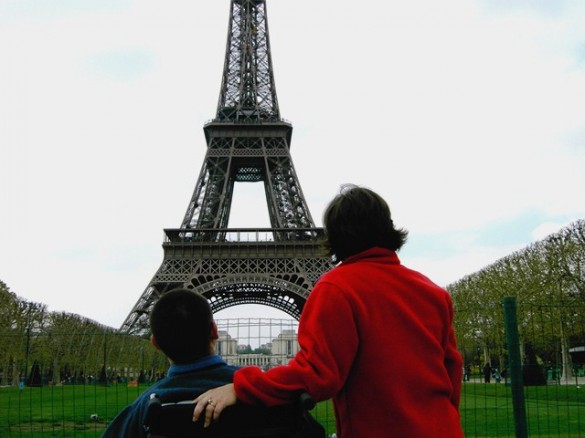
One of the most popular destinations in the world, Paris does not have a reputation for accessibility but has been very aggressive in updating its facilities to be wheelchair-friendly.
Getting around used to be almost impossible but now most buses are accessible via a deployed ramp at the back door. Around 50 metro stations in the city are barrier-free, though you still might need a little help negotiating the ramp at the train door. Metro Line 14 and RER Line E are completely accessible.
Some popular wheelchair accessible attractions that have nearby barrier-free stations are the Eiffel Tower (Pat Kennedy), the Louvre (Pyramides), Arc de Triomphe (Charles de Galle/Etoile), Notre Dame (Chatalet), and Versailles (Versailles-Rive Gauche). Visit Parisbytrain.com for an excellent English language barrier-free Paris transit map.
As a Croatian friend once told me about dining in Paris, “walk down the street, when you see a restaurant go in and eat…it will be the best restaurant you can find.” He was not far off. Paris has some of the world’s best food and bad restaurants are hard to find. Look at the menu, if you see (or smell) something that looks good and your chair can get in, go and have a great meal. Our best was Café St. Germain.
Rooms in Paris will be small and expensive but several hotels offer accessible accommodations. Novotel Tour Eiffel, Best Western Les Theatres, Hotel Aida Opera, and Le Meridien Etoile all have barrier-free rooms with roll-in showers available.
>> Plan your trip with our Paris travel guide
>> Check out five summer travel tips for France
>> Discover how you can visit Paris on a budget
Philadelphia, Pennsylvania
The United States was born in Philly, a few blocks west of the Delaware River at Independence Hall, and the City of Brotherly Love makes it easy for the wheelchair user to explore its rich history.
SEPTA is the main transit authority in Philadelphia. In addition to a subway system, they run accessible commuter trains from the airport and suburbs into downtown. Most of the stations in the city center are accessible. Out in the suburbs, especially the west to northwest towns, less so. All city buses are equipped to transport wheelchairs. You can see an accessible transit map at septa.org.
Sports fans have it easy here as well. All the stadiums and arenas are located together at the AT&T Sports and Entertainment Complex south of downtown and are served by two accessible stations on the Broad Street subway line. The facilities are new and wheelchair seating is very easy to come by. Other accessible attractions include Independence National Historic Park, National Constitution Center, and Benjamin Franklin’s grave.
For food, graze through the Reading Market or go down to the Italian Market and just follow your nose. Of course, no trip to Philly would be complete without going to 9th Street and Passyunk Avenue to try a cheese steak from competitors Geno’s and Pat’s.
You can get some reasonably priced accessible rooms by the airport at Microtel, Courtyard by Marriott, and Fairfield Inn – all are near a barrier-free SEPTA train station – or in town at Radisson Plaza Warwick, Sofitel Philadelphia, and Loews Hotel.
>> Learn about more things to do in Philadelphia
>> Search for cheap flights to Philadelphia
>> Find the best hotels in Philadelphia
>>Check out these tips for having an indie travel experience in Philadelphia
London, England
The ancient heart of England is the easiest way for wheelchair users to dip their toe into Europe.
The Underground, London’s subway system, also called the Tube, goes everywhere but chair users will need to do a bit of planning. Many stations are accessible in such popular locations as Westminster, Waterloo Station, Tower Station (by the Tower of London and Tower Bridge); but other locations will rule out the use of the Tube such as Piccadilly Circus, Abbey Road, and Hyde Park. Take heart, though. The buses are just about completely accessible, with only two “historic” lines using old, inaccessible double decker buses, and go everywhere. By law, all of London’s taxi cabs must be wheelchair accessible too. Check Transport for London’s website for maps of barrier-free Tube stations and bus routes. On the barrier-free map, also check the backside (or page 2 online), which list each station’s gap, the distance from the platform to the train in height.
Many of London’s big sights are free such as the British Museum, the National Gallery, and the Imperial War Museum. Other attractions offer a disabled discount (called a concession) and allow one care giver in for free, such as the London Eye, Tower of London, and Westminster Abbey. One attraction found to be very accessible is the Churchill War Rooms, an underground lair where Winston Churchill ran Great Britain’s WWII war effort.
Several hotels offer wheelchair accessible rooms with roll-in shower, such as the Westminster Marriott and the Copthorne Tara at the higher end. Two lower priced hotels with great barrier-free rooms are the Days Inn Waterloo and the Jurys Inn in Chelsea.
>>Read about 10 reasons to visit London now
>>For the history buff, check out more World War II sites in London
>> Search for cheap flights to London
Seattle, Washington
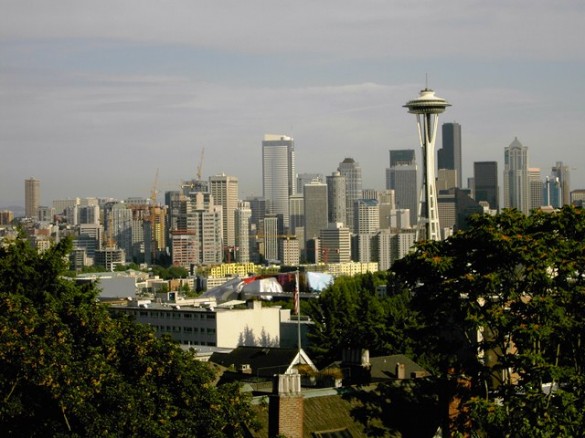
This green, hilly city looks to be a challenge to chair users, but luckily looks are deceiving. The home of Starbucks is a great place to explore by chair.
The city is a bit late to the rail transit game but with the new Link light rail system, the area took a huge leap in barrier-free transit. Running from SEA-TAC airport, through to the north side of downtown, the new 100% accessible line means no more frustrations trying to book an accessible taxi from the airport. Sound Transit runs Link and also the great step-free bus system that gets wheelchair riders to even the hilliest destination; transit in the downtown area is free.
The Supersonics basketball team fled the town for greener pastures but sports fans will like that Safeco Field (baseball) and Qwest Field (football) are adjacent to each other and offer excellent, if a bit expensive, accessible seating. We also like that the Pyramid Brewery, across the street, offers a great happy hour before each game.
A unique Seattle attraction would also be the wheelchair-friendly ferries that leave from downtown to Bainbridge Island or further afield to places like Victoria, British Columbia. The iconic Space Needle is wheelchair accessible, or check out the view from the Columbia Tower and Smith Tower where access to the observation deck is a bit cheaper. Note that the Smith Tower deck is not 100% accessible but chair users can enjoy the view.
The Homewood Suites in Queen Anne, located a few blocks from the Space Needle, offers large, accessible suites, great free hot breakfast, cocktail hour, and incredible service. Other hotels in the area that would be good for wheelchair users include the Sheraton, the Paramount, and the Maxwell.
>> Learn more about Seattle and other great cities for visiting National Parks
>> Find hotels in Seattle
>> Look for airfare to Seattle
Munich, Germany
Modern German efficiency meets old world charm in this Bavarian capital. A lot of history has happened here – not all of it good – but travelers will not come away from this city unmoved.
Transit here is nearly 100% barrier-free and becomes more chair-friendly all the time. The workhorses are the U-Bahn and S-Bahn trains that travel under the city. U is for Urban, S is for Suburban. Over 90% of their stations are wheelchair accessible and they go almost everywhere. Where those trains don’t go is mostly covered by the tram system; the trams are undergoing modernization and are not completely equipped with ramps yet but if an older model train arrives, just wait a few minutes, the next train will be accessible. With so much train coverage, there is not a lot of need for buses here but bus service that does exist is accessible via a ramp deployed by the driver out the rear door.
Munich offers some remarkable barrier-free attractions, like the Englisher Garten Park, the old Frauenkirche (ramp at side entrance), the Olympic park, BMW Museum & factory, and the Nymphenburg Palace. A trip to Munich should not be complete without a visit to Dachau, the Nazis’ first concentration camp; get there via S-Bahn and accessible bus from the train station. A day trip to nearby Salzburg, Austria is another very easy activity to do while in a chair, and be sure to visit one of Munich’s 400 beer gardens, like the Augustinerkellar near the main train station.
for hotels, try Hotel Exquisit, Tryp Munchen, and Fleming’s Hotel, all of which have roll-in showers, free breakfast, and are centrally located.
>> Learn how to experience Oktoberfest on a budget
>> Discover how to travel like a local in Bavaria
>> Search for the best airfare to Munich
For more on wheelchair travel, read:
Photos by: Boston, Chicago, New York, Philadelphia, London, Munich; all others by the author and may not be used without permission
